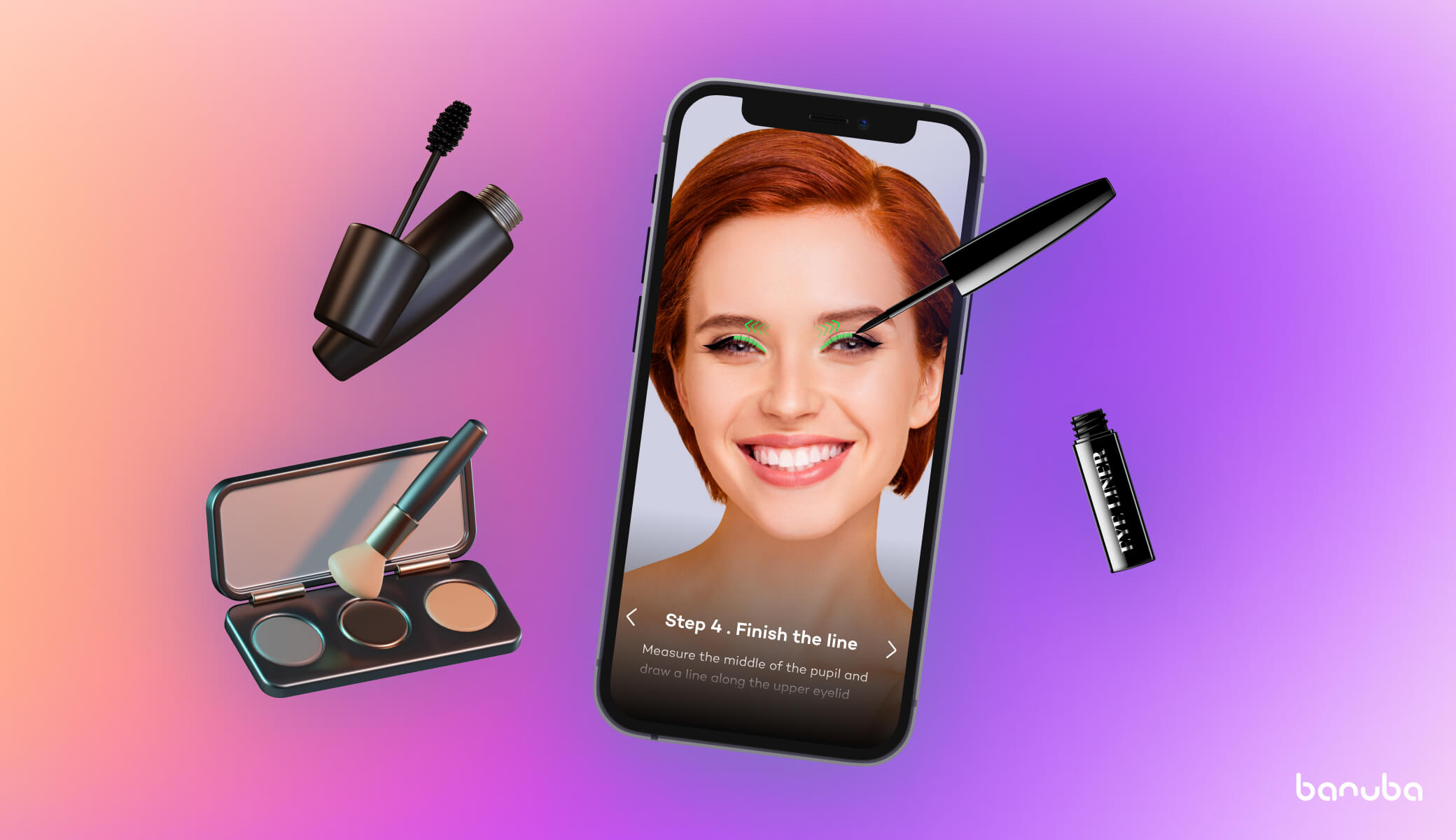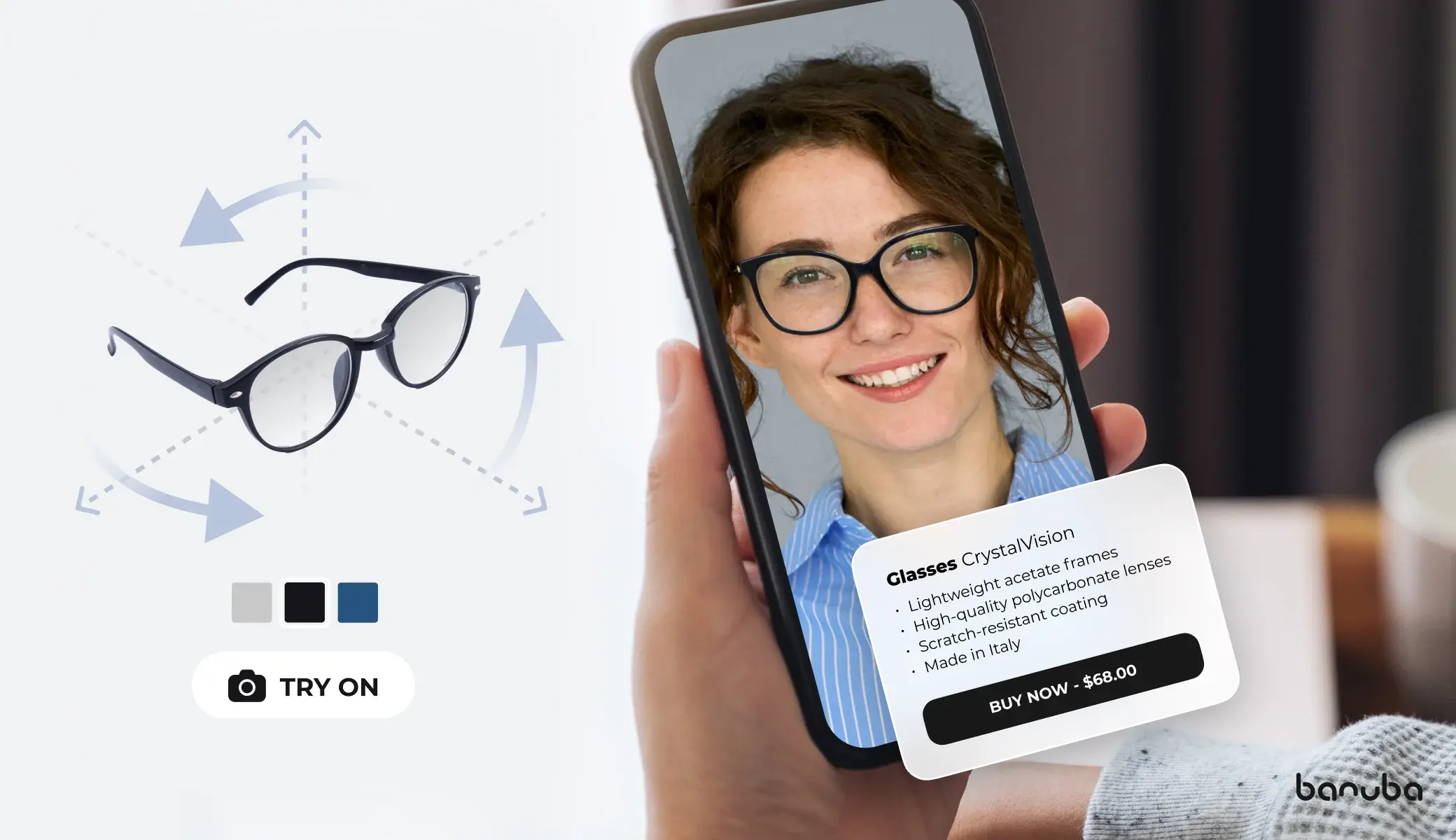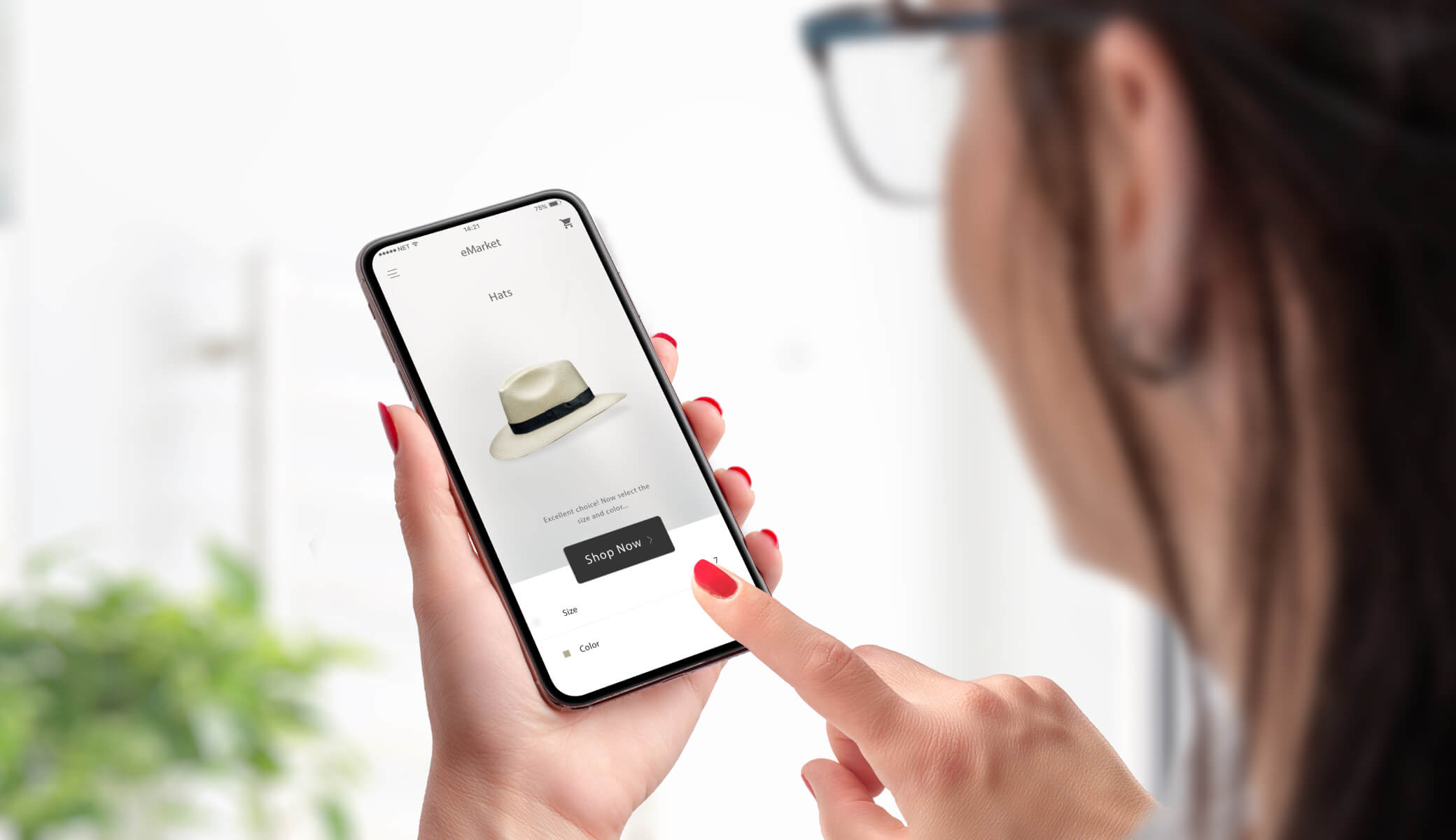[navigation]
TL;DR
- Four main applications of augmented reality in e-commerce: Virtual Try-On, Preview Placement, Interactive User Manuals, and Social Media Filters.
- Virtual Try-On solutions can boost conversion rates significantly (e.g., Avon saw a 320% increase in conversions).
- Preview Placement helps customers visualize products in their environment, reducing returns (e.g., IKEA saw a 35% reduction).
- Interactive User Manuals make assembly easy; Burberry used AR for personalized makeup tutorials.
- Social Media Filters help brands connect and engage (e.g., Gucci’s AR try-on campaign reached 19 million users).
- 8 brands leveraging AR effectively: L'Oréal, Estée Lauder, Sephora, Essie, Warby Parker, Baume & Mercier, RayBan, and Amazon.
- Banuba's TINT platform: a top-tier platform for integrating AR into beauty and fashion domains, boosting engagement by 200% and reducing refunds by 60%.
How Businesses Use Augmented Reality in e-Commerce
There are four effective options for implementing augmented reality in e commerce. Depending on your niche, you can consider one or combine several techniques.

Virtual Try-On Solutions
Virtual Try-On (VTO) solutions are perhaps the most popular and effective use of augmented reality in e-commerce. The market for them is expected to grow at a CAGR of 26.4% till 2029. These solutions allow customers to see how beauty products like makeup, nail polish, or skincare would look on them and help them choose accessories like glasses and jewelry without visiting a physical store. Beauty brands like L'Oréal and fashion companies like Warby Parker have pioneered immersive try-on experiences to boost customer confidence. Accenture says 61% of shoppers are more likely to purchase after experiencing a virtual try-on. A striking example is the cosmetics giant Avon. The virtual try-on helped the company increase conversion rates by 320% and the average order value by 33%.
Preview Placement
Imagine buying furniture without knowing how it will look in your home. E-Commerce augmented reality solves this problem with preview placement features that let customers visualize how products fit into their real environment. IKEA’s AR app was a pioneer, allowing users to “place” furniture in their rooms, assuring them that they’re making the right choice. This significantly reduces the number of returns and improves customer satisfaction. According to IKEA, the AR preview placement feature led to a 35% reduction in product returns and increased sales by 14%. It was the 2nd most downloaded ARKit application back in 2018.
Today, retailers can benefit from augmented reality in eCommerce by leveraging the Shopify AR feature to add 3D products to their stores for buyers to interact. According to the platform, boosting eCommerce ROI is one of the key advantages of using AR for eCommerce. They report that 44% of shoppers are more likely to purchase after interacting with a 3D product and 65% — after interacting with AR.
Interactive User Manuals
Gone are the days of frustrating instruction booklets. Some brands now use augmented reality e-commerce features to provide interactive user manuals. By simply pointing their smartphone at the product, customers can see visual guides, explaining the setup process in an easy-to-understand manner. This makes a world of difference for tech products or items that require assembly. For example, Adam Pickard created a proof of concept called AssembleAR to demonstrate how to simplify consumers’ lives via step-by-step instructions.
However, it goes far beyond furniture, construction, or art. Beauty retailers and brands can also leverage augmented reality in e commerce to create interactive makeup or hairstyle guides to promote their products. Back in 2020, Burberry created its Virtual Studio with Makeup Tutorials in place, personalized by AI, considering each user’s facial peculiarities and features.
Social Media Filters and Engagement
Instagram is no longer about food photos; TikTok is more than just funny short videos. These are platforms for monetization, working with influencers, brand promotion, and an additional communication channel with the target audience. Filters and masks created with the help of augmented reality are still entertaining, but they have commercial value. In 2020, nearly 50 million Americans used augmented reality filters on social media at least once a month. Imagine this figure now. About 90% of users claim that ads created with this technology are more likely to grasp their attention.
In 2020, Gucci collaborated with Snapchat and created their first global shoe virtual try-on campaign on social media, reaching almost 19 million unique users. Imaging promoting your new makeup collection via virtual try-on filters before it hits the stores?
This is just a short introduction to the technology and how you can use it. Want to learn more? We have prepared a full guide on augmented reality for e commerce.

Augmented Reality E-Commerce Examples: 8 Brands and Trendsetters
Nothing works better for inspiration than success stories. I’ve prepared for you 8 brands that rock in e-commerce augmented reality.

Beauty Domain
- L'Oréal is a leader in beauty tech. It offers augmented reality makeup try-on. And the brand's investment in VTO does pay off. According to their CEO Nicolas Hieronimus, they see a 150% growth in virtual try-on usage among consumers compared to 2022. The brand uses the technology to enhance personalization, helping users make more informed decisions and reducing product returns.
- Estée Lauder uses VTO for skincare and makeup products, making online shopping more personalized and leading to higher satisfaction rates. Their website includes skincare diagnostics and makeup recommendations, which has led to a 67% increase in conversion rates and 2.5 more time spent on their website.
- Sephora knows all about e commerce augmented reality. The chain allows customers to try on makeup virtually using their "Virtual Artist" feature, which has led to a 200% increase in engagement and 25% in add-to-basket rate. Sephora’s virtual try-on has also helped increase customer dwell time on their platform, translating to more conversions.
- Essie uses augmented reality in e-commerce to show customers how different nail polish colors look on their nails. This feature has helped Essie to create a more immersive shopping experience, especially for customers hesitant about new colors.
Fashion Domain
- Warby Parker is a great example of a direct-to-customer brand with a strong omnichannel marketing strategy. Prior to the virtual try-on on its website, the company also offered the try-at-home kit with a stylist’s consultation, which increased the likelihood of purchase by 50%. Now, shoppers can try on every pair available without waiting for a parcel.
- Baume & Mercier leveraged an augmented reality e commerce approach to promote the Riviera collection of their luxury watches directly on their website. Potential buyers could visualize how the accessory would look on their hands and review a 3D model for every detail.
- RayBan combines machine learning with augmented reality to offer customers a smart advisor to help them find that perfect pair of glasses. The algorithms analyze the input profile information a buyer can fill in and the face shape via camera to offer the best match.
Amazon doesn’t lag behind the AR eCommerce trend. So far, the retailer has offered its virtual try-on feature only for eyewear and shoes in the mobile shopping app. However, the integration of augmented commerce didn’t stop there. It introduced a new approach of virtual try-all, powered by the new Diffuse-to-Choose AI model. It allows shoppers to try any object sold on Amazon in their environment or on their photos by drawing a selected area. The artificial intelligence will overlay the product naturally for a buyer to visualize.
How to Integrate Augmented Reality in E-Commerce?
Business owners and retailers can cut their way to augmented reality in commerce by integrating off-the-shelf tech platforms like TINT from Banuba, leveraging decades of expertise and innovative solutions.
TINT is an advanced AR Virtual Try-On solution that offers unmatchable features:
- High-quality augmented reality rendering, providing hyper-realistic try-on experiences with precise product overlays;
- Multi-platform compatibility, seamlessly integrating with web, mobile, and smart mirrors;
- Pupillary distance measurements for optometry and glasses fitting;
- Patented face and hand tracking technology with 3.308 vertices;
- Over 22.000 digital products in the catalog and new products' digitalization in 48 hours;
- Customizable UI, allowing you to tailor the customer experience to match your brand identity;
- AI-powered smart advisor for hyper-personalized product recommendations and customer journeys;
- Dataset- and appearance-based recommendation systems for knowing every customer’s preferences and tastes;
- Fast and seamless integration in up to 2 weeks with lifetime support.
It’s a one-stop solution for e-commerce businesses looking to leverage augmented reality to engage their customers. With features that cater to the beauty industry — including makeup, skincare, hair coloring, and nail polishes — and the fashion sector — such as eyewear, jewelry, and headwear — Banuba’s solution provides a seamless and immersive experience that keeps customers coming back for more. According to our data, businesses that have integrated TINT as their e-commerce augmented reality solution have seen a 200% boost in engagement rates and a 60% reduction in refund rates.
Conclusion
Augmented reality in e-commerce is not just a trend — it’s a revolution that’s here to stay. By adopting solutions like Banuba’s Virtual Try-On, businesses can offer their customers a shopping experience that’s immersive, interactive, and unforgettable. The benefits are clear: increased engagement, higher conversion rates, and fewer returns, and your customers can see, try, and fall in love with your products before they even click “Buy.”










